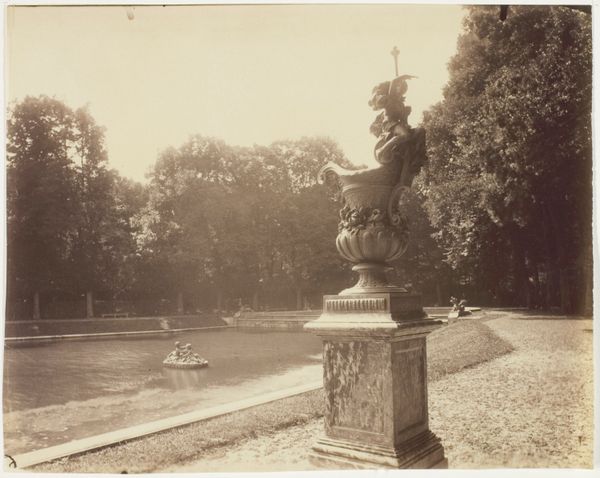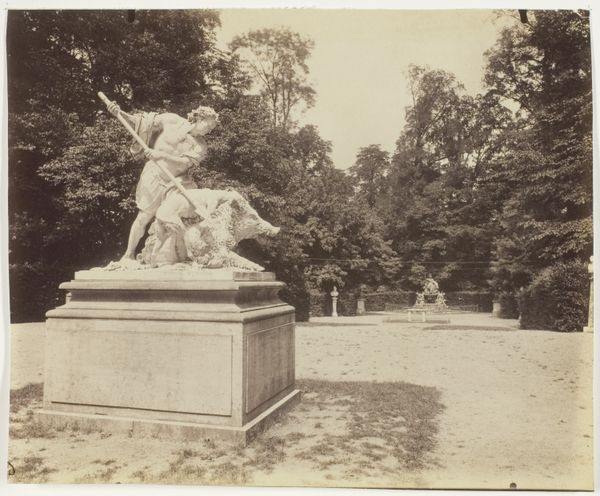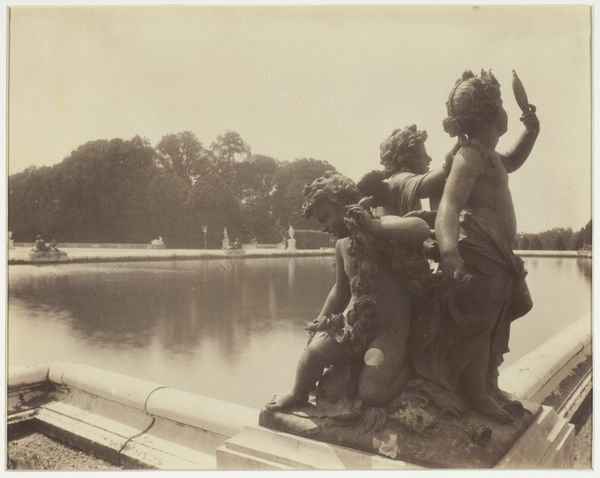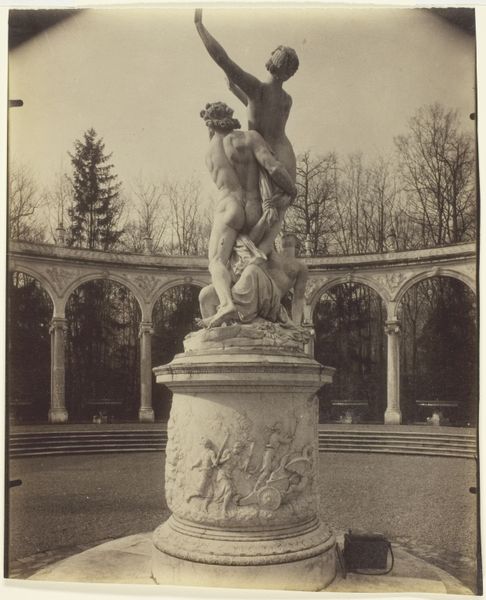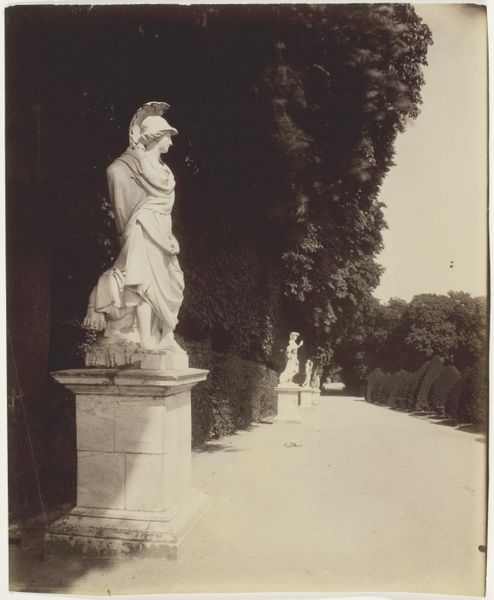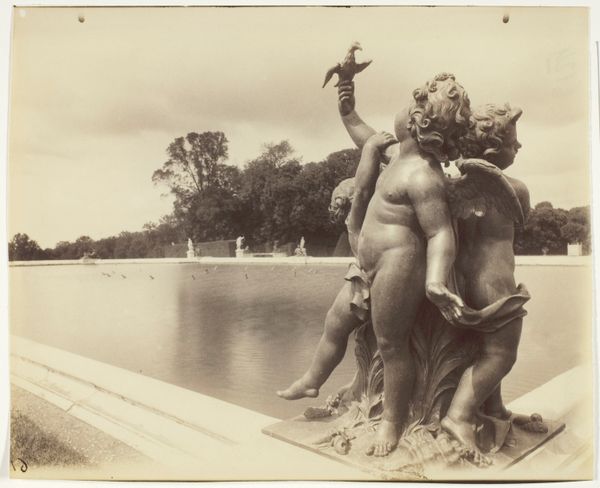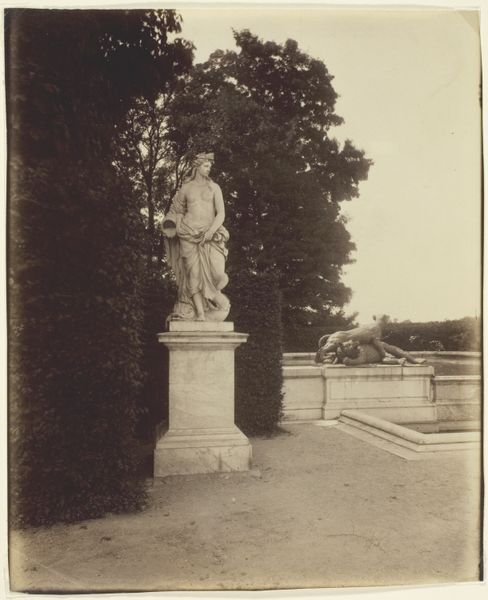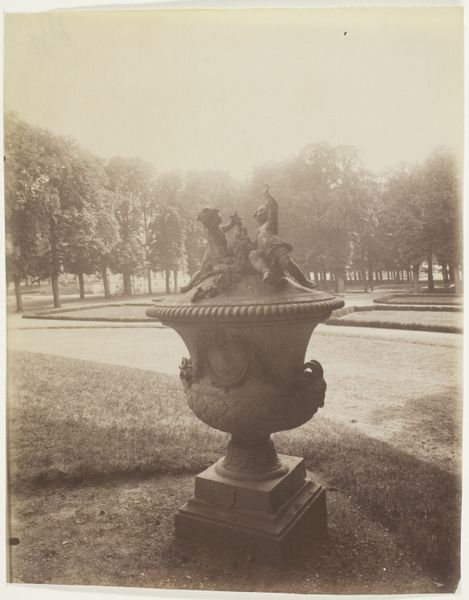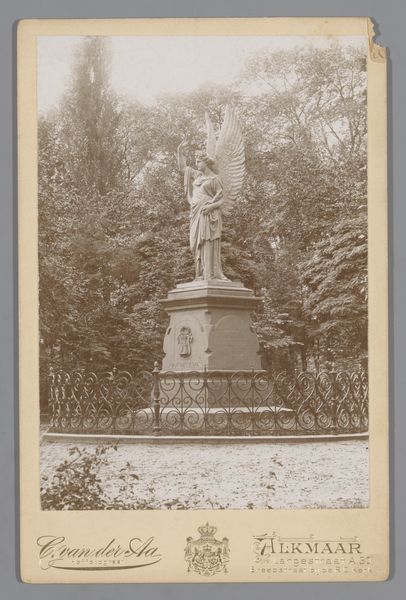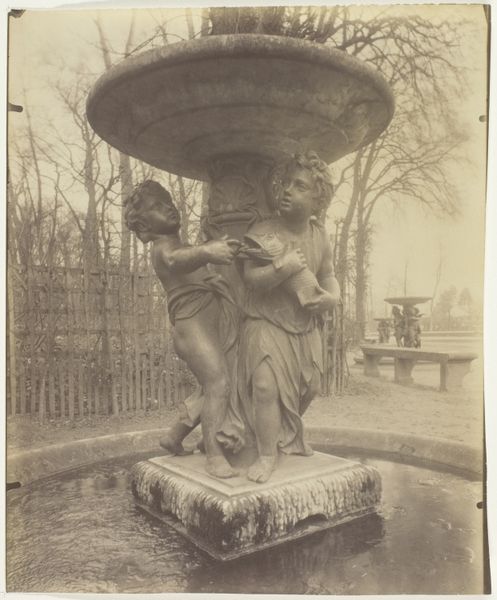
print, photography, sculpture
# print
#
landscape
#
classical-realism
#
photography
#
sculpture
#
academic-art
Dimensions: 17.6 × 21.7 cm (image/paper)
Copyright: Public Domain
Editor: Here we have Eugène Atget’s photograph, "Versailles, Grand Trianon (Vase par Le Lorrain)" from 1901. It's a sepia-toned print of a sculpted vase within the Grand Trianon gardens. I find the statue’s placement oddly intimate against the grand backdrop. How would you interpret Atget's approach to photographing Versailles, particularly given its historical context? Curator: Atget wasn’t simply documenting Versailles; he was capturing a moment in the afterglow of its political significance. Think of Versailles as a stage. By 1901, the French aristocracy and their absolute power were gone, but the stage remained, populated now by tourists and photographers. Atget's work reflects the shift from a site of power to a site of public consumption, don’t you think? Editor: Absolutely, but wouldn’t other artists document such places? What made his imagery stand apart from mere documentary work of the era? Curator: Precisely, his choices are significant. Instead of framing it for purely aesthetic consumption, Atget includes aspects of decay, of daily life intruding on idealized spaces, highlighting a contrast. Consider the unkempt areas; how they hint at the decline of a former grandeur. He exposes a visual paradox: a landscape preserved but undeniably altered by history and use, not a staged idealization for nobility and courtly art, no? Editor: That’s a very insightful perspective! I hadn't considered the framing as a conscious statement about Versailles’ evolving role, but instead focused only on capturing a famous architectural element. Thanks. Curator: Of course! His lens reminds us that monuments are not static; they become fluid representations of the power and memory systems that once influenced culture.
Comments
No comments
Be the first to comment and join the conversation on the ultimate creative platform.
